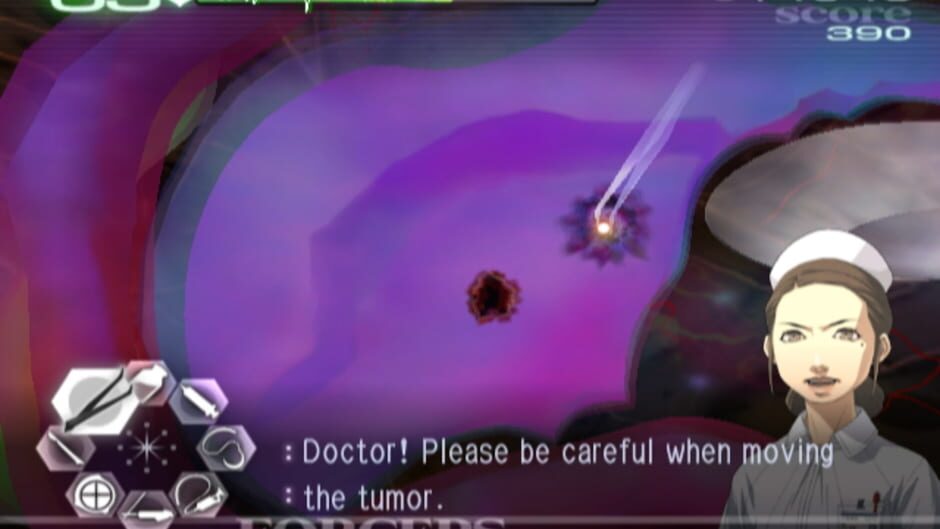

Second Opinion still basically looks like a DS game. The difficulty still spikes cruelly in several places, and while there has been a slight overhaul of graphics and some snippets of voice acting added, One scenario calls for the surgeon to repair a fractured arm by rotating misaligned bone fragments back into place with the forceps. The ability to twist the Wiimote and rotate objects is also used to great effect. The defibrillator, for example, works by thrusting both the Nunchuck and Wii Remote forward and pressing the Z and B buttons at the correct moment to create an electronic charge. Second Opinion also expands the usability of certain tools by making use of some of the Wiimote's unique motion-sensing features. This is in contrast to the DS version, where the flow of surgery would constantly have to be interrupted as the player switched tools.

Instead of having to tap the corresponding graphic to select one of eight surgical tools, the player can simply flick the Nunchuk's joystick in a particular direction to choose a tool on the fly, allowing the other hand (holding the Wiimote) to stay focused on performing the procedure.

The ability to "dual-wield" the Wiimote in one hand and Nunchuk in the other (with its eight-directional joystick) is an inspired combination that streamlines surgeries considerably. This has to do with the fact that the DS stylus is basically a one-trick pony capable of tapping and dragging, while the Wiimote's ability to rotate, measure depth and partner with the Nunchuk attachment gives it added versatility.įor example, the forceps become a much more intuitive tool using the Wiimote because you're able to grasp objects by pinching the A and B buttons together. With the exception of the scalpel, which the DS stylus doubled for perfectly, the surgical tools are all generally as easy if not slightly easier to control using the Wiimote. The plot ultimately ends up veering off into sci-fi territory: Stiles discovers he has a superhuman ability called the Healing Touch, and routine surgical procedures give way to ridding patients' bodies of alien-like parasites called GUILT. The Wii Remote stands in for numerous surgical tools, and is used to make incisions, apply bandages and healing cream, suction blood, administer needles, and remove foreign objects with forceps, among other things.

Players might find themselves removing glass shards from a car accident victim's internal organs one minute, and burning polyps off of a rock singer's vocal chords the next. Trauma Center is set in the chaotic, life-or-death environment of the hospital operating room, and focuses on the lives of the doctors who work there - in particular, the young up-and-coming trauma surgeon Derek Stiles. Trauma Center also works rather well on the Wii. The surgery simulation made brilliant use of the Nintendo DS's PDA-like interface, and as it turns out, Trauma Center: Under the Knife, which Atlus developed for the Nintendo DS handheld. Second Opinion is actually an overhauled port of You can't get much more precise than surgery, which is where While the Wiimote can more or less accurately replicate the grand gestures of bowling, baseball and boxing, I was interested to see whether Nintendo's unique motion-sensitive controller - touted as being more organic and less intimidating than traditional videogame controllers - could hold up during activities that require a little more precision. The Verdict: As intuitive on the Wii as Under the Knife was on the DS.The Bad: Same old difficulty spikes half-hearted aesthetic upgrades.The Good: New scenarios controls well on the Wii.


 0 kommentar(er)
0 kommentar(er)
